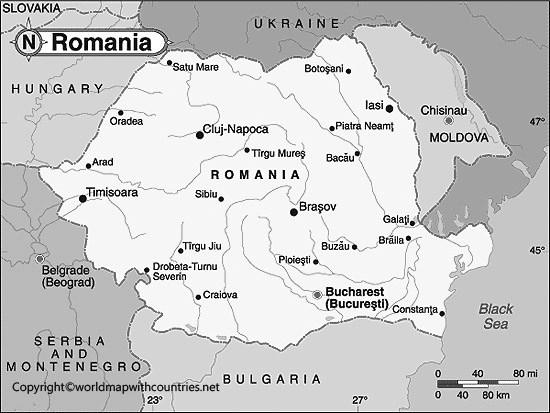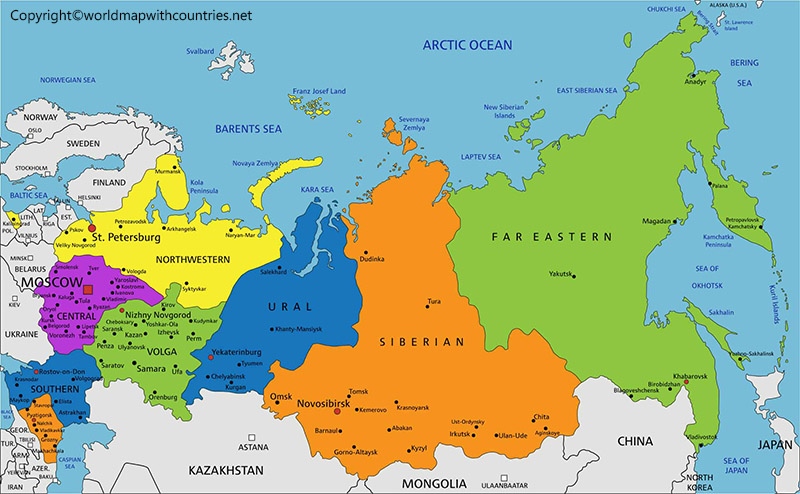Canada’s economy is highly dependent on the U.S. Canada is the U.S.’s most active trading partner. Canadian trade with the United States of America. exceeds all Japanese and European business with the U.S. combined. 80% of all Canada’s exports are probable for American markets. Canada is the second-largest country in the world map (after Russia), occupying roughly the northern two-fifths of the continent of America. The total area of Canada is 9.9 million square kilometers (3.8 million square miles) which include about 891,163 square kilometers (344,080 square miles) of water. Canada is substantially affected by the new regulations of the U.S. More can be seen in the Canada map with cities below.
Table of Contents
Labelled Canada Map with Cities and States
Where is Canada located on the map of the world?
What are the borders of Canada?
What is the population of Canada?
How many provinces does Canada have?
What are the territories of Canada?
Which is the Capital city of Canada?
Free Blank Printable Canada Map
Political Map of Canadian Cities
Which are the major rivers of Canada?
Canada Map with Rivers
Which languages do Canadians Speak?
What is the primary religion of Canada?
Canada on a world Map
Labelled Canada Map with Cities and States
The map of Canada with States and Cities shows governmental boundaries of countries, provinces, territories, provincial and territorial capitals, cities, towns, multi-lane highways, major highways, roads, winter roads, Trans-Canada highways, and railways, ferry routes and national parks in Canada.
Canada is the world’s second-largest country in terms of land area. Despite this, Canada ranks 39th in terms of population. Despite the low population density, this friendly Northern country still has some significant cities. Each of these acts as a magnet for a variety of reasons, including prominent universities, prosperous industries, ideal topography or weather, unique cultures, and, of course, the presence of a crowd-drawing National Hockey League (NHL) club in practically all of the ten largest towns on this list. The following are the ten largest cities in Canada (in population size).
1. Toronto – 6.255 million
2. Montréal – 4.247 million
3. Vancouver – 2.606 million
4. Calgary – 1.581 million
5. Edmonton – 1.491 million
6. Ottawa-Gatineau – 1.408 million
7. Québec City – 0.832 million
8. Winnipeg, Manitoba – 0.825 million
9. Hamilton, Ontario – 0.771 million
10. Kitchener-Cambridge-Waterloo – 0.571 million
Where is Canada located on the map of the world?
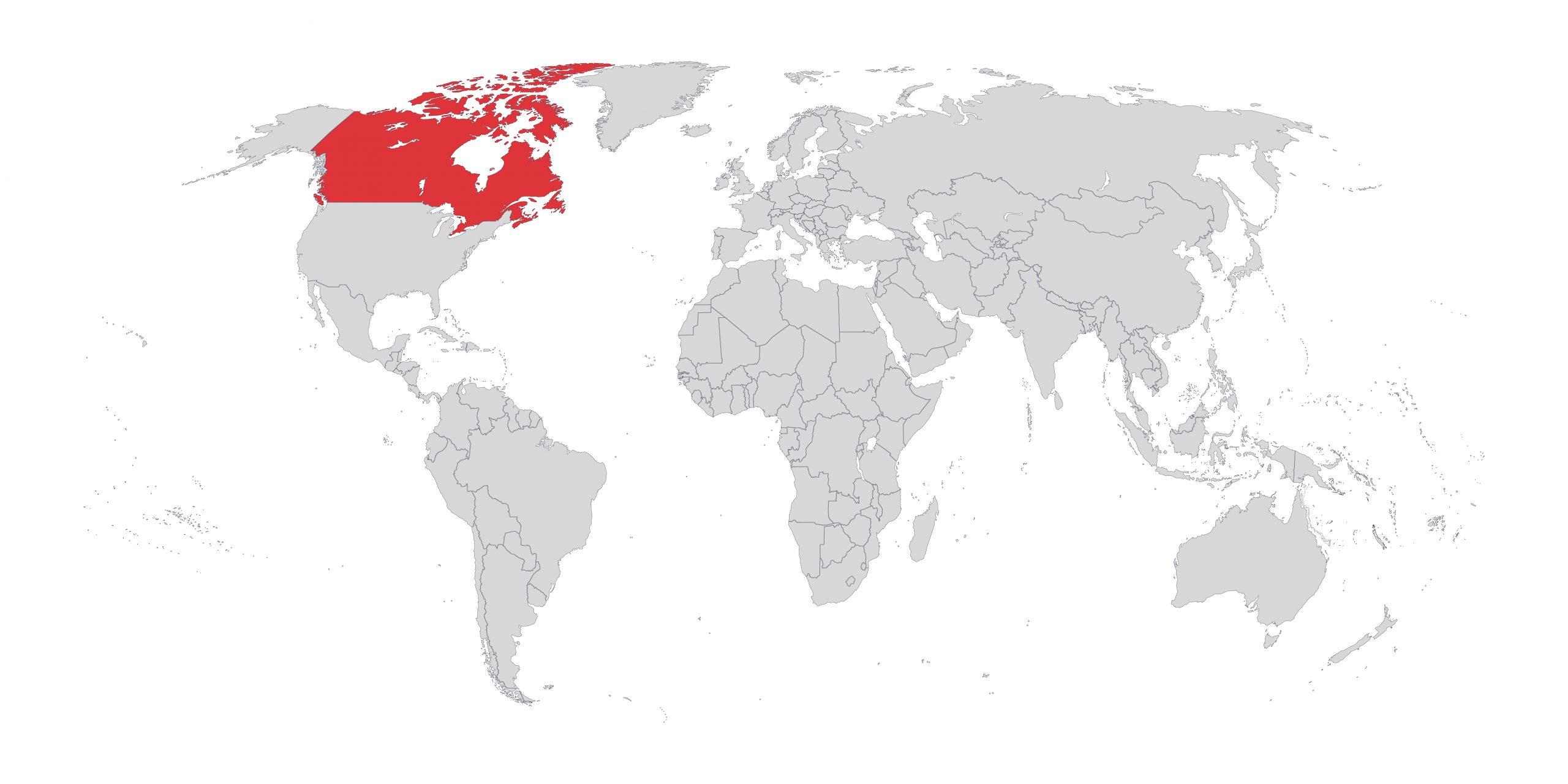
Canada in World’s Map shows that Canada is in the northern part of North America. Canada is such a beautiful and incredible country, so watch this Map of Canada and your knowledge of this city-related. Read this article very carefully and expand your knowledge.
What are the borders of Canada?
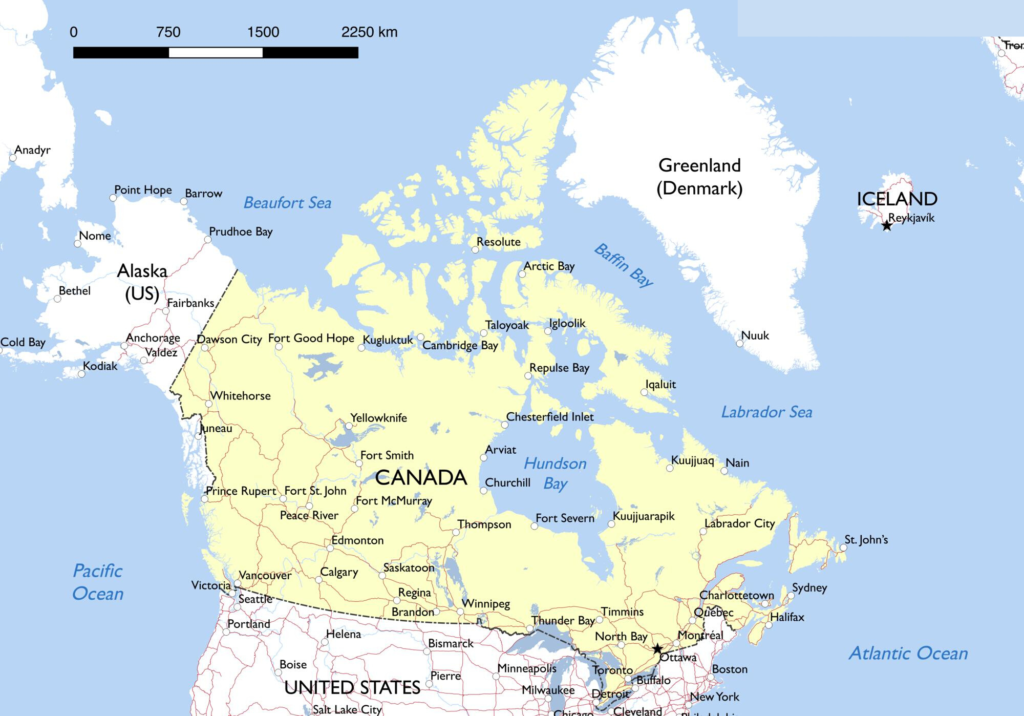
Canada shares its borders with the United States along its southern border and its western edge, where it borders the U.S. state of Alaska. Canada also shares its borders with the Atlantic Ocean in the east, the Pacific Ocean in the west, and the Arctic Ocean to the north. Canada is one of the largest countries in the world, second only to Russia in territorial size.
What is the population of Canada?
Canada’s population rate is grown by 208,904 years over year to an estimated 38,246,108 as of July 1, 2021. In comparison, the Canadian population had grown at over twice that pace (+435,974 people) during the same period in 2019/2020. According to the latest reports, the current population of Canada is 38,246,108, i.e., 38 million almost.
How many provinces does Canada have?
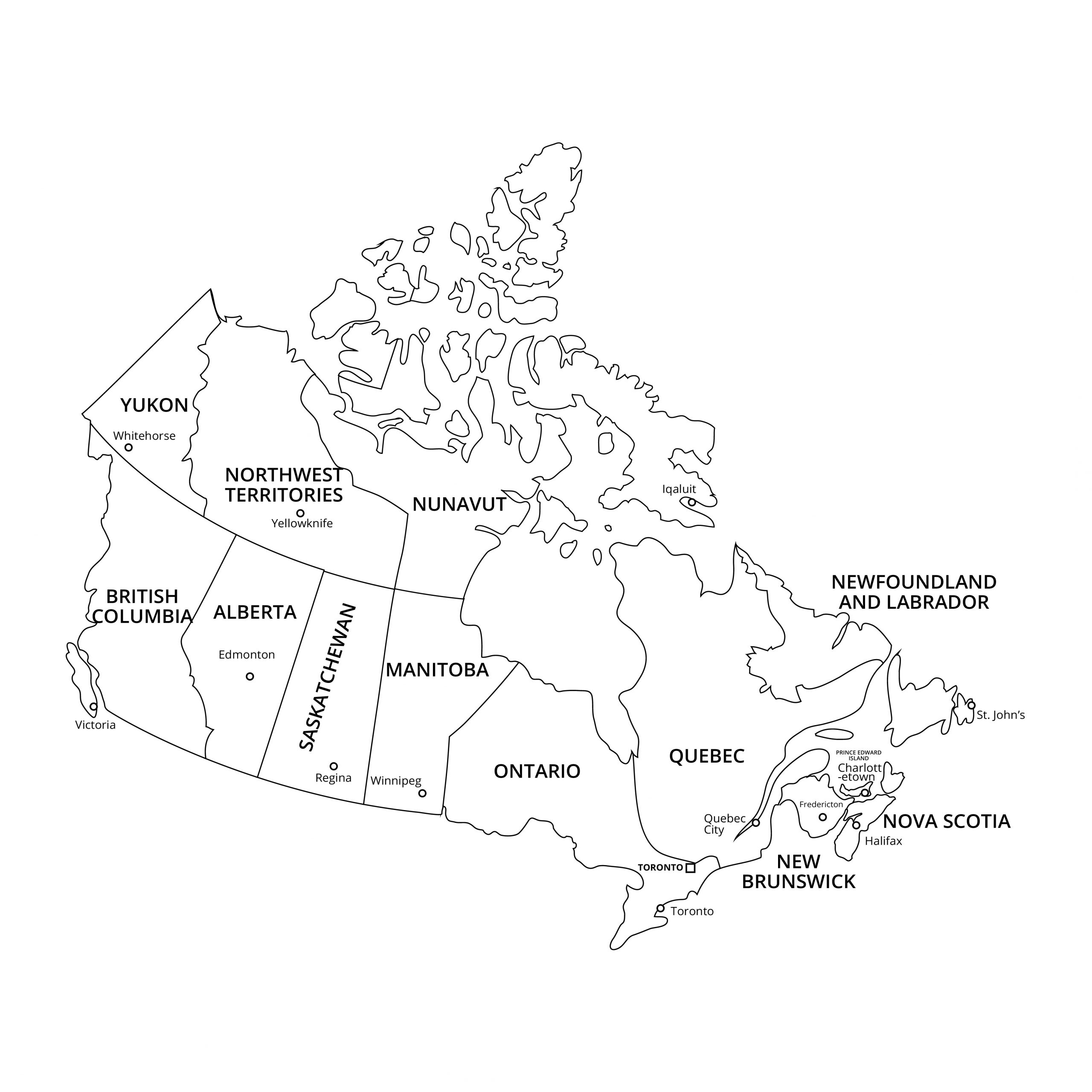
Free Blank Canada Map with Cities
Canada is a federation of 10 provinces. The ten provinces in alphabetical order are:
- Alberta: Edmonton is the capital city of Alberta. Alberta is said to be the 6th largest province of Canada, and its total area is 661,848 kilometres. It is known as the home of 5 UNESCO world heritage sites. It is playing a central role in the petroleum industry of Canada. The landscape encompasses mountains, prairies, desert badlands, and vast coniferous forests in this capital. It has more than 600 lakes and rich mineral deposits. In the west, the Canadian Rocky Mountain Parks have glaciers in the Columbia Icefields
- British Columbia: Victoria is the capital city of B.C. Its land area is 944,735 km². It is the third-largest province in Canada and the westernmost province of Canada. It is known as the production house of energy in the form of Coal, petroleum, and natural gas; hence it is the largest natural gas producer in Canada. You can enjoy hiking and biking in this area as it offers a variety of mountains, glaciers, and national parks. The Pacific Ocean shares its coastline with B.C.
- Manitoba: Winnipeg is the capital city of Manitoba. This capital is of the same importance as it is considered the world’s polar bear capital. Its total land area is 647,797 km². It is in the centre of the whole of Canada. You can enjoy the sights of many beautiful lakes and rivers over there. It produces Sunflower seeds and dry beans throughout the country.
- New Brunswick: Fredericton is the capital city of New Brunswick. It is one of the four Atlantic Provinces. Its total area is 72,908 km². It borders Quebec and Nova Scotia, as well as the United States. It is the multicultural populated area of Canada as it faces immigration from worldwide. The wealth of this capital is mainly dependent upon forestry, fishing, and mining.
- Newfoundland and Labrador: St. John’s is its capital city. It is the most easterly part of North America, situated in the northeastern corner of America. The total area of this province is 405,212 km². The Strait of Belle Isle splits this province into two parts (Newfoundland and Labrador). Newfoundland shares a border with the Atlantic Ocean. National parks may provide you with adventure in this capital. The community of this area is amicable and hospitable. The fishery is the largest source of income here.
- Nova Scotia: Halifax is the capital city of Nova Scotia. The word Nova Scotia means New Scotland in Latin. This region has numerous natural beauty, such as meadows, lakes, and forests, and it is the most enjoyable place in Canada. Its total area is 55,284 square kilometres. This province is known as ‘Canada’s second-smallest province. It is from one of the four Atlantic Provinces.
- Ontario: Toronto is the province of Ontario. It is the wealthiest province in the country. It has more than 250,000 lakes that enhance its beauty, which means you must visit Ontario if you are a nature lover. Its area is 1.076 million km². It is known as the gateway to southern California.
- Prince Edward Island: Charlottetown is the province of Prince Edward Island. it is the smallest province in Canada. Its total area is 5,660 km. It is on the east coast of North America. The primary occupation of this region is farming, and they produce 25% of the potatoes in the country. Here you can experience the red sandy beach and fertile farmlands.
- Quebec: Québec is the capital of Quebec. Its total area is 1.668 million km². It is in eastern Canada and the largest province by area and the second-largest province by population. St. Lawrence River geographically is an essential part of it. Quebec has European architecture and taste. That’s why it is considered different from the rest of Canada.
- Saskatchewan: Regina is the capital of Saskatchewan. The total area of this province is 651,900 km². It is the only province without a natural border. It is the world’s largest producer of Potash. Canadian diamonds also play a vital role in the world’s diamond market.
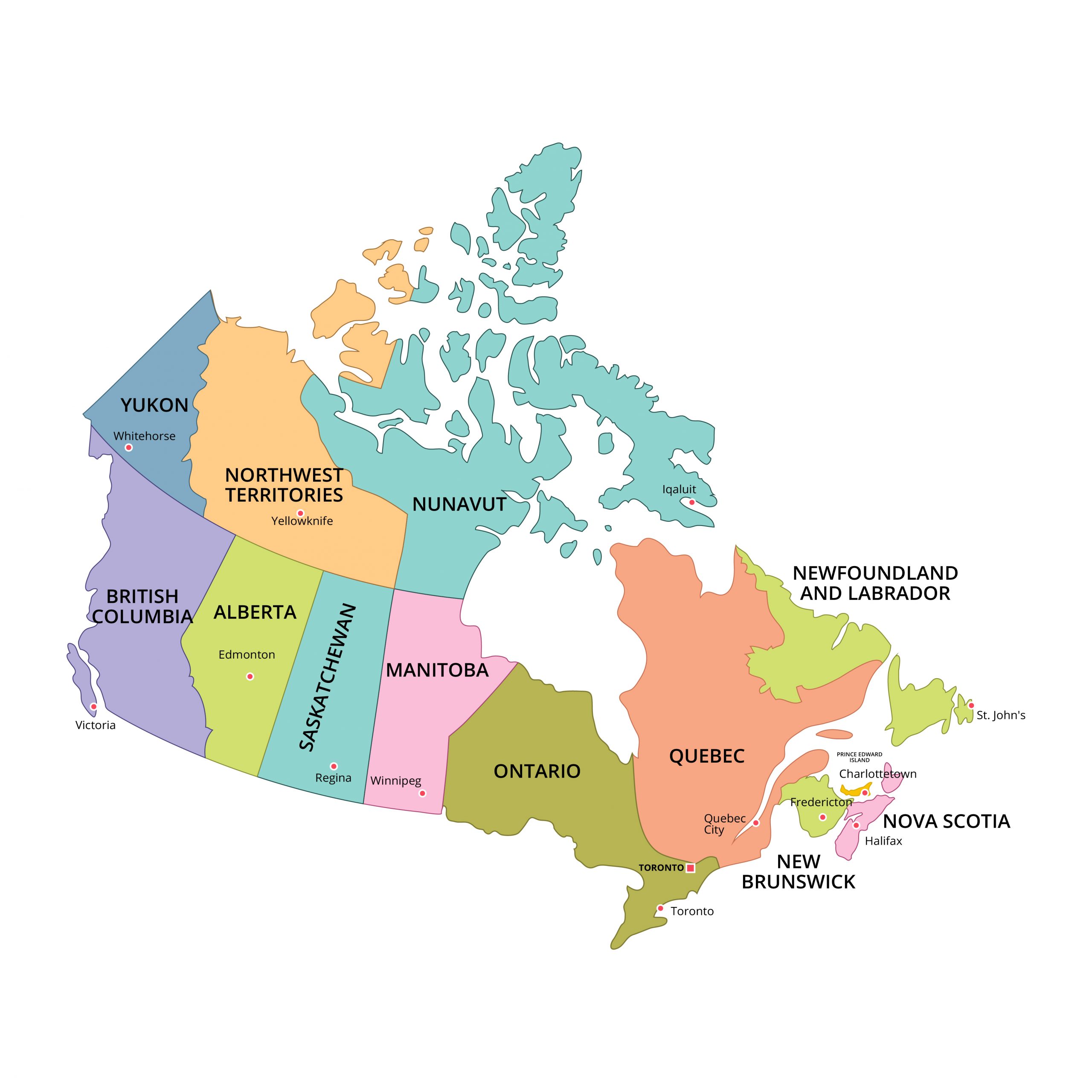
Free colorful Canada Map with Cities
What are the territories of Canada?
Other than provinces, Canada has territories too. Territory means a section, a part of a track, but in human geography. It means a specific area under the control of someone is called a territory. Countries defend their territories during wars. Some territories have defined boundaries like a nation, province, or city, while others, like a neighbourhood, may not. In some places, the exact border and who claims what land is unknown.
So, Canada has three territories given as
- Northwest Territories: Yellowknife is the capital of this region. Its area is about 1.346 million km² Two of the largest freshwater lakes (Great Slave Lake and Great Bear), and river systems (Mackenzie River) are in Northwest Territories. If you are in this territory, you must visit Dehcho’s Nahanni National Park. You will also see mountains, hills and beautiful landscapes in this area.
- Nunavut: Iqaluit is the capital city of this province. The area of this province is 2.093 million km². It has four official languages, and it is the youngest territory in Canada. It has craggy mountains and remote villages where you can go only by plane or boat.
- Yukon: The capital of this province is Whitehorse. It has rich in natural resources like mineral water, oil, and gas. Its area is 482,443 km². The cost of housing and healthcare is more expensive in Yukon than in Canada.
Which is the Capital city of Canada?
Ottawa is the capital of Canada, situated in southern Ontario near the city of Montréal and the U.S. border. Queen Victoria chose this capital city in 1857. Its total area is 2,790 km² Ottawa has two famous waterfalls; Chaudière Falls and Rideau Falls. It attracts a massive crowd of tourists itself. You can also enjoy the international music festival here. There are mountains, Hills waterfalls in this city to entertain you. Northern Ontario and Southern Ontario are two distinct geographic regions in Ontario. The south contains the majority of Ontario’s population and fertile land. The northern region of Ontario, on the other hand, is sparsely inhabited, with severe winters and dense forestation.
Free Blank Printable Canada Map
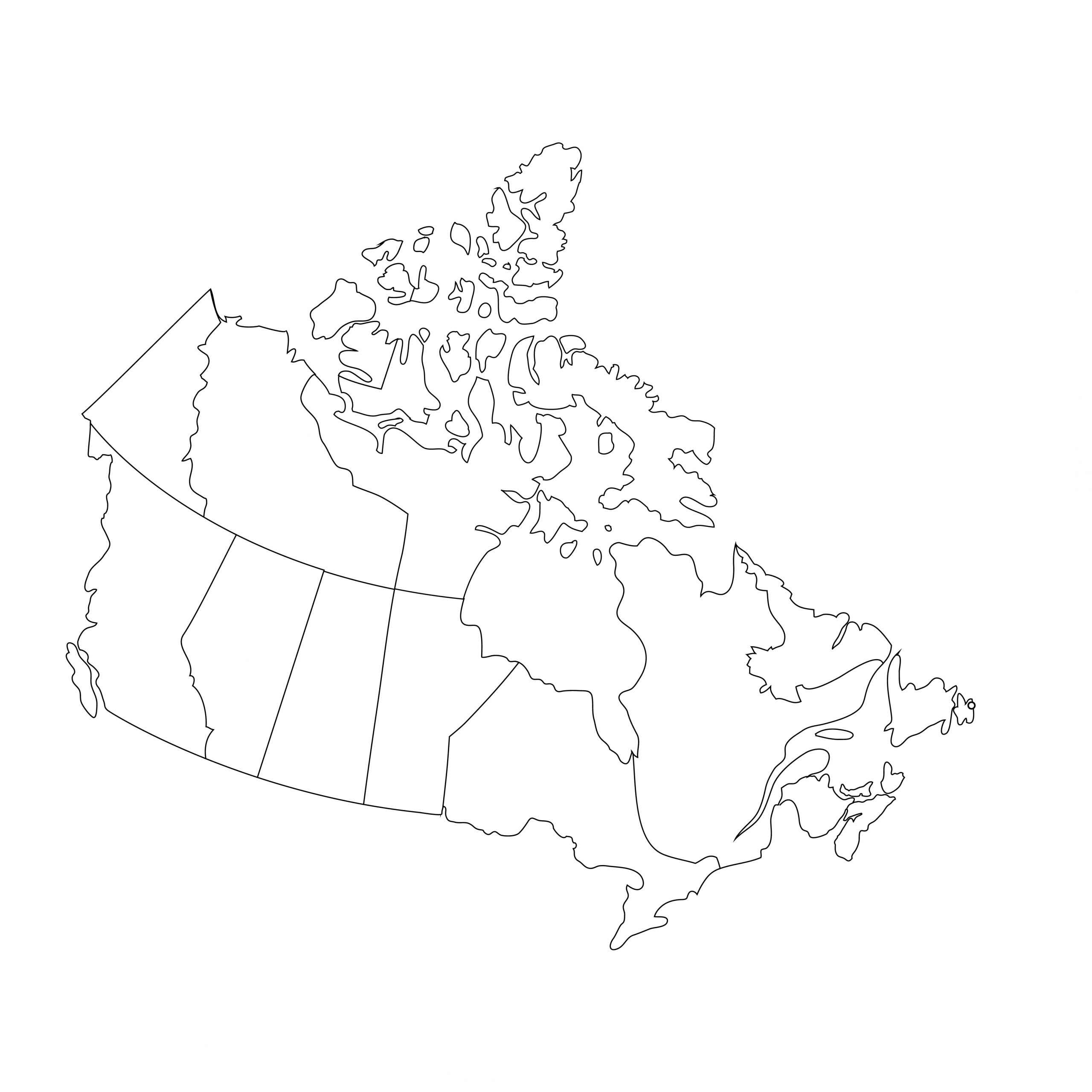
Free Blank Printable Canada Map
You can obtain a soft copy of the free blank printable Canada here. This map can be printed from a cyber-shop or produced at home using a printer. You will find a wealth of information about Canada’s and its states’ borders. The Arctic Ocean, Hudson Bay, the Atlantic Ocean, and the Pacific Ocean will all be visible on this downloadable map. A user can explore Canada and its borders with such a map. It is also possible to designate provinces, territories, and different lakes on a downloadable map of Canada. For historical examination, a printable blank map of Canada is excellent for marking it with crucial information and facts. The use of a blank printable map of the continent of Canada includes the classrooms, businesses, or anywhere else to track journeys or for other purposes. It is typically a horizontally oriented map
Political Map of Canadian Cities
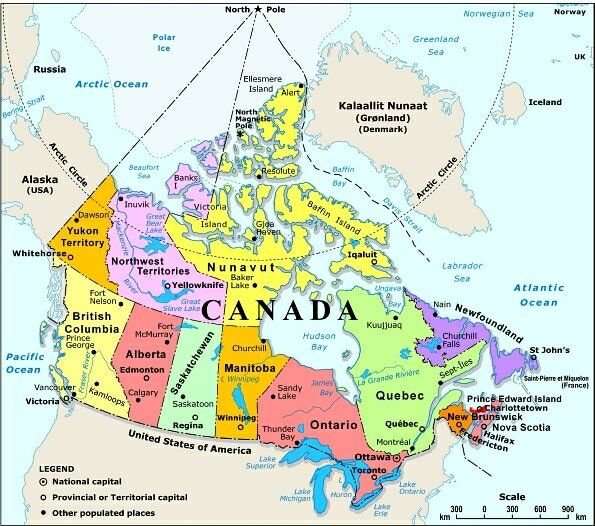
Politcal Canada map with cities
The political Map of Canadian Cities shows the governmental boundaries of countries, provinces, territories, and provincial and territorial capitals in Canada.
Which are the major rivers of Canada?
Ten major rivers in Canada are St. Lawrence, Columbia, Fraser, Mackenzie, Yukon, Saskatchewan, Nelson, enslaved person, Peace, and Churchill Rivers. These rivers span the entire country, with two flowing through the United States. You can see all the rivers in North America as well
Canada Map with Rivers
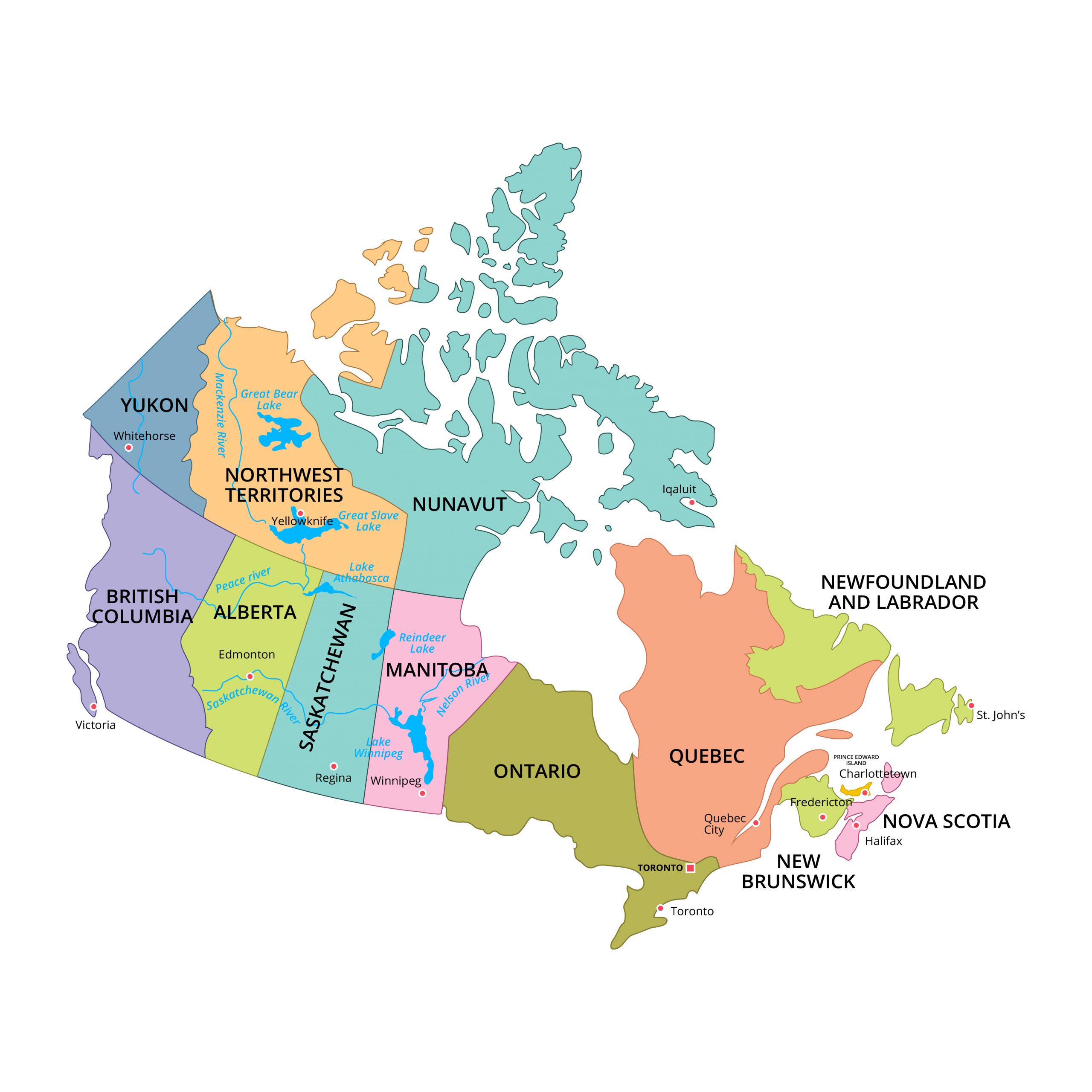
Check out all the major Canadian rivers on the map of Canada with their accurate and precise geographical location
Which languages do Canadians Speak?
Canada is a multicultural country, they speak so many languages, but French and English are said to be the mother languages. But you will hear many other languages everywhere in Canada, such as Mandarin, Punjabi, Italian, German, etc., because of people from all over the world visit Canada for earning and tourism.
What is the primary religion of Canada?
Canada is not a very religious country; you may see people following different faiths and beliefs. The majority of the population follows Christianity. There is freedom of religion In Canada. So, people from other religions such as Muslims, Hindus, Catholics, Sikhs, Protestants, and many others also live in Canada.
Canada on a world Map
If you see Canada on a large world map, you will realize that Canada is one of the nearly 200 countries illustrated on our Blue Ocean Laminated Map. This map includes country boundaries, major cities, provinces, significant Rivers, physical and geographical features, roads, etc.
I hope you find this article helpful.


